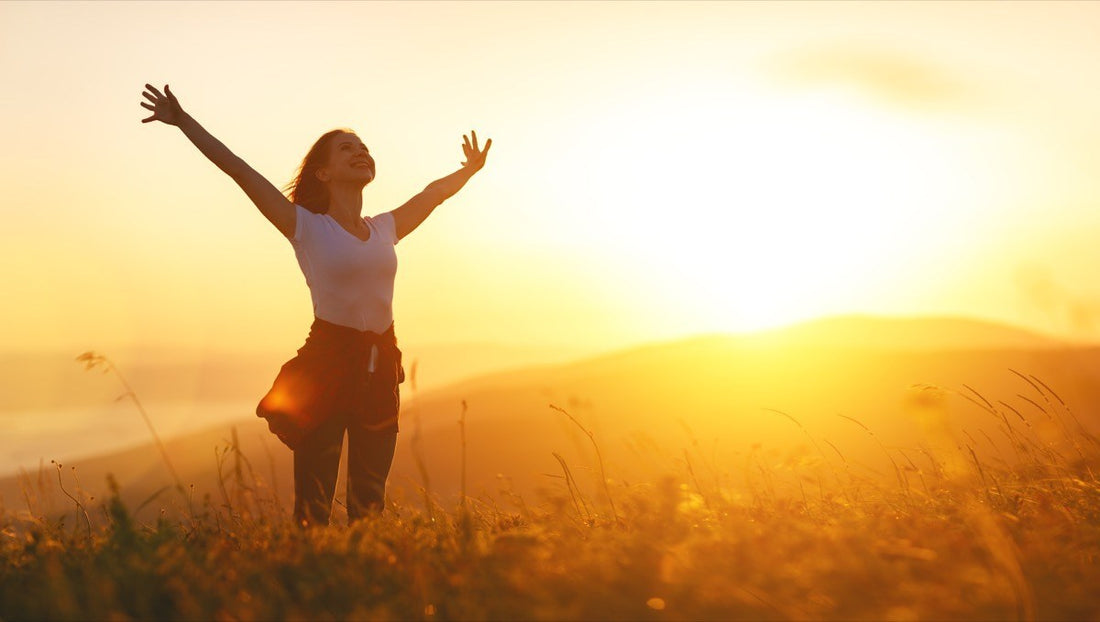
Pranayama: Learn Breathing Techniques For Your Dosha
Share
One way to calm the mind and reduce stress is through Pranayama. In Yoga and in Ayurvedic medicine, Pranayama is deeply used and the results are phenomenal. But you may be thinking: what is Pranayama and how can you implement it in my routine? Is there a specific practice or technique that I should use for my specific dosha? Well, if you're curious and want to know more, just keep reading. We'll explain everything for you!
What is Pranyama?
Pranayama refers to breathing exercises which clear the physical and emotional obstacles in our body to free the breath and so the flow of prana - life energy. Regular and sustained practice of Pranayama can supercharge your whole body!
Pranayama for Vata: Nadi Shodhana
A great technique for balancing and harmonizing Vata is the alternate nostril breath, known as Nadi Shodhana. Nadi Shodhana is great for releasing physical tension, supporting a clear mind, enhanced tranquility, and stress reduction. It’s perfect for anytime you’re feeling anxious, nervous, stressed, depleted, or exhausted.
Doing it yourself
Take a comfortable seat. Make sure you feel warm. Use a blanket if you need. Sit tall and close your eyes. Block the right nostril gently with the right thumb. Begin by inhaling slowly up the left nostril. Close the left nostril with the ring finger. Lift the thumb and exhale down the right nostril. Inhale back up the right nostril. Exhale left, then continue at a comfortable rhythm. The breath should be smooth, soft, comforting, and relaxing. Do this for about 7 minutes, then feel the sweet rejuvenation of this simple breathing practice for Vata.
Pranayama for Pitta: Sitali Breath
Pitta is made of fire and water. Its main qualities are hot, oily, light, and sharp. Cooling Sitali Breath has the opposite characteristics, so it cools and calms the excesses in Pitta. Sitali Breath is great for the summer season of Pitta or anytime you’re feeling irritated, angry, frustrated, or noticing a little acid indigestion.
Doing it yourself
Take a comfortable seat with an erect spine. Put your hands on your lap with your palms turned up. Close your eyes and take a refreshing breath in through a curled tongue. Close the lips. Lightly touch the tip of your tongue to the roof of your mouth. Exhale through the nose. Repeat, inhaling through the curled tongue, exhaling through the nose, as the tip of the tongue lightly tickles the roof of your mouth. Do it for a few minutes until you feel refreshed. Notice the increased clarity, coolness, and spaciousness in body and mind.
Pranayama for Kapha: Bhastrika (Bellows Breath)
Kapha is made of water and earth. Its main qualities are heavy, sticky, cool, and oily. Bhastrika (Bellows Breath) has,again, the opposite characteristics, to stimulate, warm, and lift the excess in Kapha. Bhastrika helps increase the graceful flow of prana through the body’s energy channels (nadis). It also helps to remove excess congestion in the lungs and brighten the mind. Bhastrika is best during springtime, or anytime you feel sluggish, lethargic, mildly congested, or unmotivated.
Note: This breathing technique is meant to be done on an empty stomach. Have a tissue handy in case excess mucus is loosened. Avoid Bhastrika during pregnancy, or if you have heart or respiratory conditions.
Doing it yourself:
Sit and have your hands resting on your lap. Close your eyes. Soften and relax the jaw and facial muscles. Through the nose, inhale deeply, flaring the ribs open. Exhale fully, as the lungs deflate. Continue the fanning breath technique, giving equal emphasis to each flaring inhalation and deflating exhalation. Keep the spine tall as you squeeze out the excess in Kapha. Continue for 20 seconds, then return to natural breathing. Notice the warmth, lightness, and stimulation of Bhastrika.
These exercises are focused on each type of dosha and the effectiveness is fascinating. So tell us guys, are you in the mood to try? Well, practice at home and see how it works. We hope you all feel better after a good breathing session. Good Pranayama for you!

